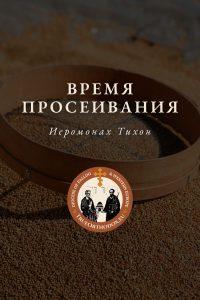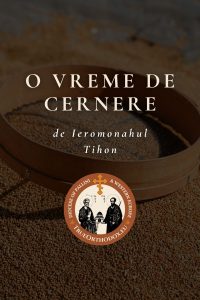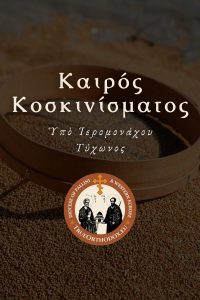The Fruits of a Schism by Protopresbyter Victor Melehov
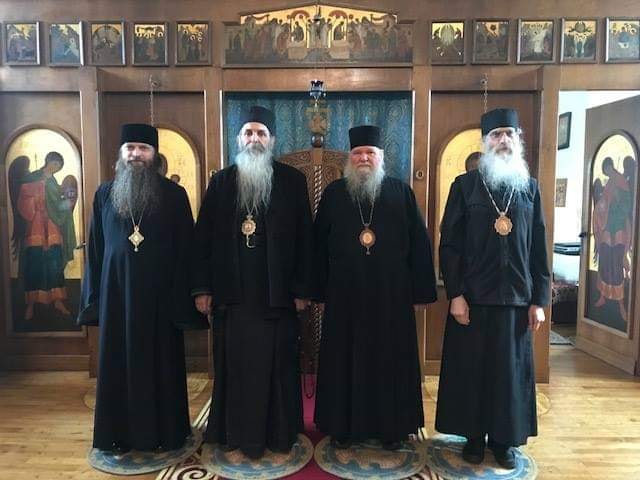
The Fruits of a Schism
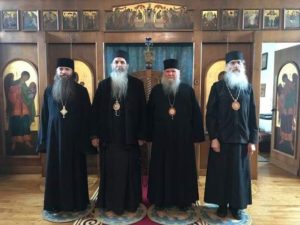
Last month (October 2018), the Agafangel Synod deposed two of its bishops (Archbishop Andronik of Canada, and Archbishop Sophroni of St. Petersburg, Russia), and summoned the suspended Abbot Andrei (Erastov) from Australia. Why is this important to the Orthodox Faithful? Because the kaleidoscopic deceit of this synod continues to spin even beyond the boundaries of its own control.
To bring some clarity to this confused and fog-bound “circus,” I have written this brief chronology of pertinent events before and after the fall of the ROCOR into union with the Moscow Patriarchate (MP):
– Shortly after his ordination in 1994, the young Bishop Agafangel displayed his ignorance of Orthodox ecclesiology by publishing an article proclaiming the validity of sacraments outside of the Church:
“…the Grace of the Holy Spirit, the Grace of the Sacraments, resides also with the Catholics, Monophysites, and in part, with Old Believers and Protestants who have not violated the formula in performing the sacraments (baptism). The Orthodox Church does not re-baptize those who come from these heresies but receives them through repentance. Catholics and Monophysites are not chrismated a second time. The Sacrament of Marriage is also accepted. In the Moscow Patriarchate, there are six Sacraments which have been preserved and are recognized as valid – baptism, chrismation, the priesthood, marriage, unction, repentance.”
(Bishop Aganfangel Pashkovsky, Vestnik TOC, No. 2, 1994, pg. 30)
– Assigned by the ROCOR Synod to the Ukraine (where he was born in Odessa), Bishop Agafangel worked alongside Archbishop Lazar of Odessa and Tambov (who ordained him) until 2001.
– In 2001, Metropolitan Vitaly was forced to resign by the ROCOR Synod, led by the new Metropolitan Laurus, who had a firm intention to join the Moscow Patriarchate (MP)
– Almost immediately, Met. Vitaly came out of retirement with the intent of opposing any union with the MP. Archbishop Lazar and Archbishop Benjamin (of Chernomorsk & Kuban) declared their support for Met. Vitaly, and after the First Voronezh Conference of the Russian clergy, sent Bishop Agafangel to the Synod in New York instructing him to present their protest, signed by the bishops, clergy, and participants of this Conference.
– Arriving in New York, Bishop Agafangel betrayed the will of his fellow bishops and all the Russian clergy and announced his own support of the newly elected Met. Laurus.
– Archbishop Lazar and Archbishop Benjamin soon separated from the Synod of Met. Laurus for reasons of Faith; the result of their rejection of the Sergianism and Ecumenism of the
MP. They began ordaining bishops for their RTOC Synod (including the present Archbishop Tikhon and Bishop Germogen), which they were obliged to do according to the canons of the Church; appointing worthy candidates to widowed Russian cathedras.
– In 2007, Met. Laurus completed his stated mission by bringing the entire ROCOR under the jurisdiction of the MP, thereby betraying the century-long witness of Faith of the ROCOR and the persecuted Russian Church in the catacombs.
– Just prior to Met. Laurus’ betrayal in 2007, Bishop Agafangel announced that he agreed with joining the MP, but at that point in time it was “still too early.” Following this announcement, Bishop Agafangel issued a false proclamation regarding his secession from the Synod of Met. Laurus, signed by Bishop Daniel (of Erie, PA) and Bishop Agafangel. However, after two weeks Bishop Daniel dissociated himself from this appeal, saying that he remains with the Synod of Met. Laurus and does not wish to create a schism.
Then, Bishop Agafangel began to form his own synod – ROCOR(A). Collecting the remaining parishes reluctant to follow Met. Laurus, Bishop Agafangel refused the offer of his former brother bishops of the RTOC to help restore the episcopate abroad, stating that anyone who left ROCOR (because of its path to the MP), before he himself left the Synod of Laurus, was a schismatic. Having made such a frivolous statement, Bishop Agafangel apparently overlooked the fact that he was thereby calling Metropolitan Vitaly a schismatic also. Met. Vitaly left his former brother bishops-betrayers in 2001.
– Bishop Agafangel appealed to the Greek Cyprianite Synod (the Synod in Resistance). The Cyprianite Synod was deposed by the True Greek Orthodox Church (TGOC) under Archbishop Chrysostom (Kousis) for creating a schism in the TGOC and for their heretical ecclesiology (Cyprianism – confessing that the Mother/World Orthodox Church was ailing but still valid).
– Bishop Agafangel succeeded in convincing the Greek Cyprianites to ordain with him a synod of bishops for his new jurisdiction (ROCOR(A)). Lacking any understanding of his own ecclesiology, Bishop Agafangel announced that he too is a Cyprianite. Thus, he and every bishop of his new synod came under the Anathema Against Ecumenism declared by the 1983 ROCOR Sobor under the direction and guidance of the Holy Hierarch Philaret (3rd Metropolitan of ROCOR). In such a manner, the Agafangel Synod: 1) anathematized itself from its very beginning, 2) made itself uncanonical through its invalid ordinations by deposed Greek bishops, 3) became heretical through its proclaimed Cyprianite ecclesiology, and 4) became schismatic because of its rejection to recognize and join their brother bishops in the Russian Church.
– Shortly thereafter, under controversial circumstances, Bishop Agafangel became Metropolitan of his newly created ROCOR(A). He expanded his synod and jurisdiction through receiving bishops and clergy of dubious ecclesiology (i.e., from the Gennady-Sekachov sect to the MP). The need to establish an Orthodox ecclesiology was never seriously addressed, or perhaps even understood. Thus, under such circumstances, the hieromonks Andronik and Sophroni became “Archbishops” of this organization.
– As usual, one schism breeds another. Soon, Archbishops Andronik and Sophroni left Agafangel’s synod for reasons of administrative disagreements (i.e., not for canonical matters of Faith). Almost simultaneously, Bishop Stefan (Sabelnik) left the RTOC Synod for similar

